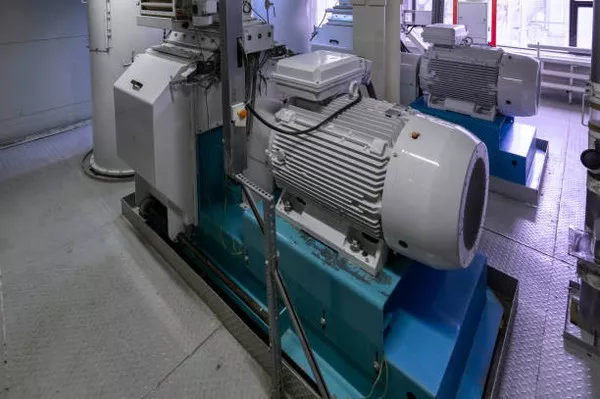In the realm of electrical engineering, current transformers (CTs) play a vital role in measuring and monitoring electrical currents safely and accurately. These devices are indispensable in a wide range of applications, from power distribution systems to industrial processes. This article aims to delve into the intricacies of current transformers, exploring their function, types, working principles, and applications in various industries.
Function of Current Transformers
Current transformers are precision instruments designed to transform high currents typically found in power lines and electrical equipment into manageable levels suitable for measurement and control purposes. They provide isolation and protection to measuring instruments and personnel by stepping down the current to a proportional, low-level signal that can be safely handled.
The primary function of a current transformer is to produce a secondary current that is accurately proportional to the primary current flowing through its primary winding. This secondary current, which is typically standardized at 5 amperes or 1 ampere, is used to drive measuring instruments, relays, or protective devices. CTs ensure that the secondary current accurately reflects variations in the primary current, thereby enabling precise measurement and control of electrical systems.
Working Principle of Current Transformers
Current transformers operate on the principle of electromagnetic induction, similar to that of voltage transformers. They consist of a primary winding, through which the primary current flows, and a secondary winding connected to the measuring or protective devices. The primary winding is typically made of a few turns of thick conductor material, while the secondary winding consists of a large number of turns of finer wire.
When current flows through the primary winding, it creates a magnetic field around the conductor according to Ampere’s law. This magnetic field induces a proportional voltage in the secondary winding according to Faraday’s law of electromagnetic induction. The turns ratio between the primary and secondary windings determines the magnitude of the secondary current relative to the primary current.
Types of Current Transformers
Current transformers come in various types and configurations to suit different applications and operating conditions. Some common types include:
Bar-type CTs: These CTs consist of a straight, cylindrical core around which the primary winding is wound. They are commonly used in high-voltage transmission lines and large industrial systems due to their robustness and high current-handling capacity.
Window-type CTs: These CTs feature a split-core design that allows them to be easily installed around existing conductors without the need for disconnecting the circuit. They are often used in retrofit applications and for monitoring currents in existing electrical systems.
Wound CTs: These CTs have a toroidal core around which both the primary and secondary windings are wound concentrically. They offer excellent accuracy and are commonly used in metering and instrumentation applications where precision is crucial.
Rogowski coils: Unlike traditional CTs, Rogowski coils are flexible, air-core coils that can be wrapped around irregularly shaped conductors or busbars. They are ideal for measuring transient or high-frequency currents in power electronics and renewable energy systems.
Summation CTs: These CTs are designed to sum the currents from multiple primary circuits into a single secondary output. They are commonly used in power monitoring systems where the total current consumption of multiple loads needs to be measured.
Applications of Current Transformers
Current transformers find wide-ranging applications across various industries and sectors, including:
Power Distribution: In power distribution systems, current transformers are used to measure the current flowing through distribution lines, transformers, and switchgear. This data is essential for load monitoring, energy management, and billing purposes.
Protection Relaying: CTs play a crucial role in protective relaying schemes by providing accurate and reliable current measurements for detecting faults, overloads, and abnormal operating conditions in electrical networks. They are used in conjunction with protective relays to initiate appropriate actions such as circuit tripping or alarming.
Metering and Billing: Current transformers are integral components of energy metering systems used by utility companies to measure and bill customers for their electricity consumption accurately. CTs provide the current input to revenue-grade meters installed at customer premises.
Industrial Automation: In industrial automation and control systems, CTs are employed to monitor the currents drawn by motors, generators, and other electrical equipment. This data is used for process control, equipment diagnostics, and predictive maintenance purposes.
Renewable Energy: Current transformers are essential components in renewable energy systems such as solar photovoltaic (PV) and wind power plants. They are used to measure the output currents of inverters, transformers, and grid connections, enabling efficient integration of renewable energy into the grid.
Fault Analysis and Diagnosis: CTs facilitate fault analysis and diagnosis in electrical systems by providing accurate current waveforms during fault conditions. This information helps engineers identify the cause of the fault and implement corrective measures to prevent recurrence.
Conclusion
Current transformers are indispensable devices in modern electrical systems, enabling safe and accurate measurement, monitoring, and control of electrical currents. By transforming high currents into proportional low-level signals, CTs facilitate various applications ranging from power distribution and protection relaying to industrial automation and renewable energy. Understanding the function, types, and applications of current transformers is essential for engineers and technicians involved in designing, operating, and maintaining electrical infrastructure. As technology advances, current transformers continue to evolve, offering improved accuracy, reliability, and versatility to meet the evolving needs of the electrical industry.

